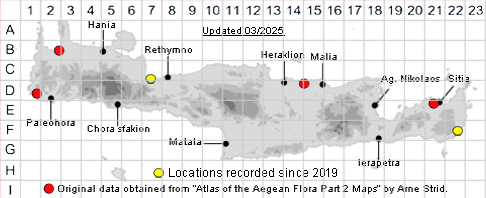
SPECIES DESCRIPTION
IPOMOEA IMPERATI
Family and Genus:- See- CONVOLVULACEAE/Sect. LEIOCALYX
Common Names:- None
Homotypic Synonyms:- Batatas sinuatus, Convolvulus imperati, Convolvulus
sinuatus, Convolvulus stolonifer, Ipomoea deppeana, Ipomoea stolonifera,
Latrienda imperati.
Meaning:- Ipomoea (Gr) Resembling a worm (reference to the twining stems).
Imperati (L) For Ferrante Imperato (1550-1625), Italian botanist of
Naples.
General description:- Annual or perennial hairless herb.
Stems:-
1) Creeping and usually rooting at the nodes.
Leaves:-
1) More or less fleshy.
a) lamina, 1-5 cm, usually oblong, entire to deeply 3- to 5-lobed, broadly cuneate
to cordate at the base, obtuse to emarginate or 2-lobed at the apex.
Flowers:-
1) Usually solitary.
2) Sepals, 8-15 mm, acute to obtuse, mucronate.
3) Corolla, 35-50 mm, white or pale yellow, sometimes with a purple centre.
Fruit:-
1) Capsule, usually 4-seeded.
2) Pollen grains, pantoporate the outer wall spinose.
Key features:-
1) Leaves, not sagittate.
2) Plant, without underground tubers.
3) Leaves, obtuse to emarginate or 2-lobed at apex.
Habitat:- Sandy beaches and maritime dunes, local but sometimes gregarious.
Distribution:- Balearic Is., Italy, Crete, N Africa and much of the E Mediterranean,
including Cyprus. Rare on Crete.
Flowering time:- Mainly May-Oct.
Photos by:- Steve Lenton
Status
Protection status (for threatened species): Greek Presidential Decree 67/1981.
